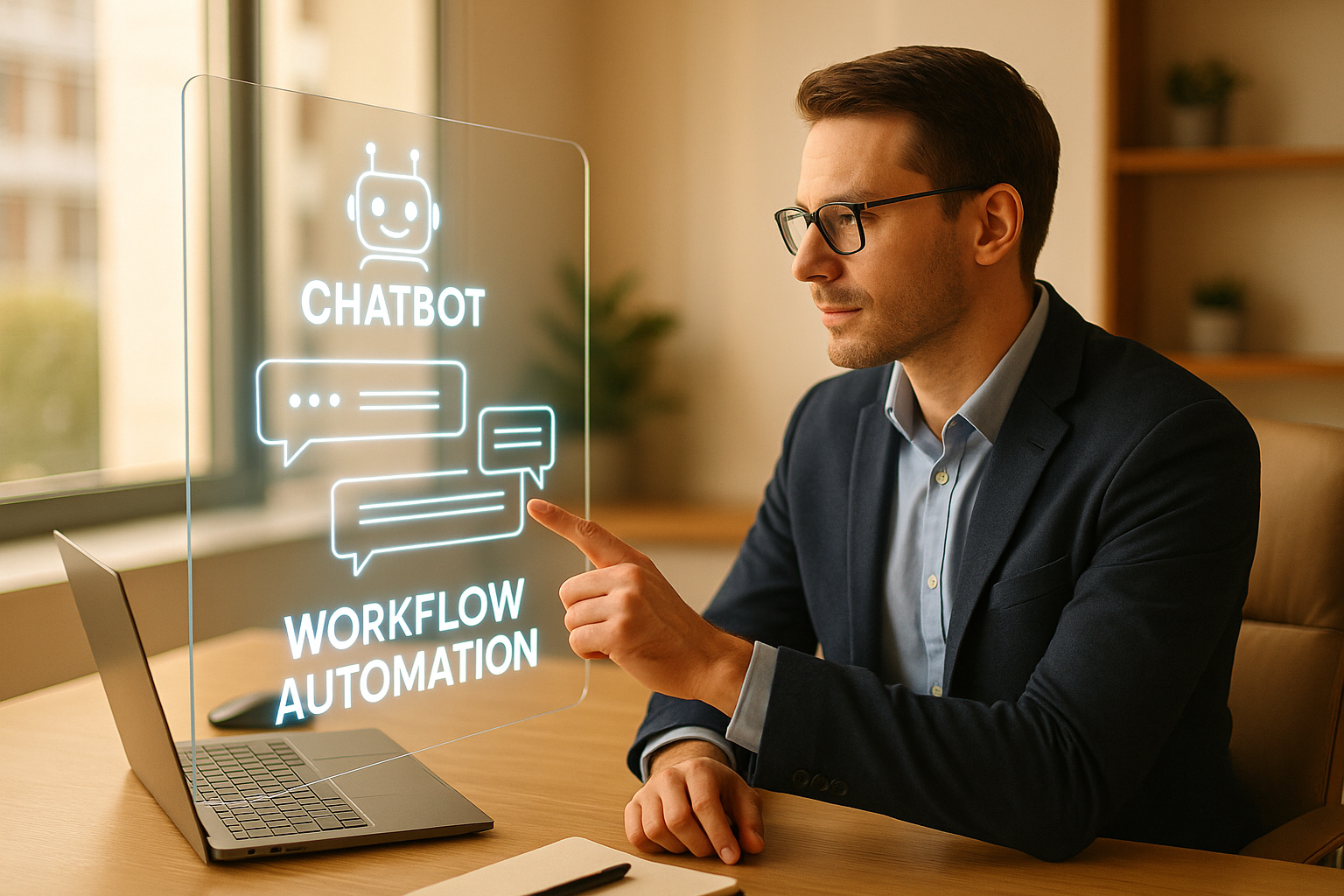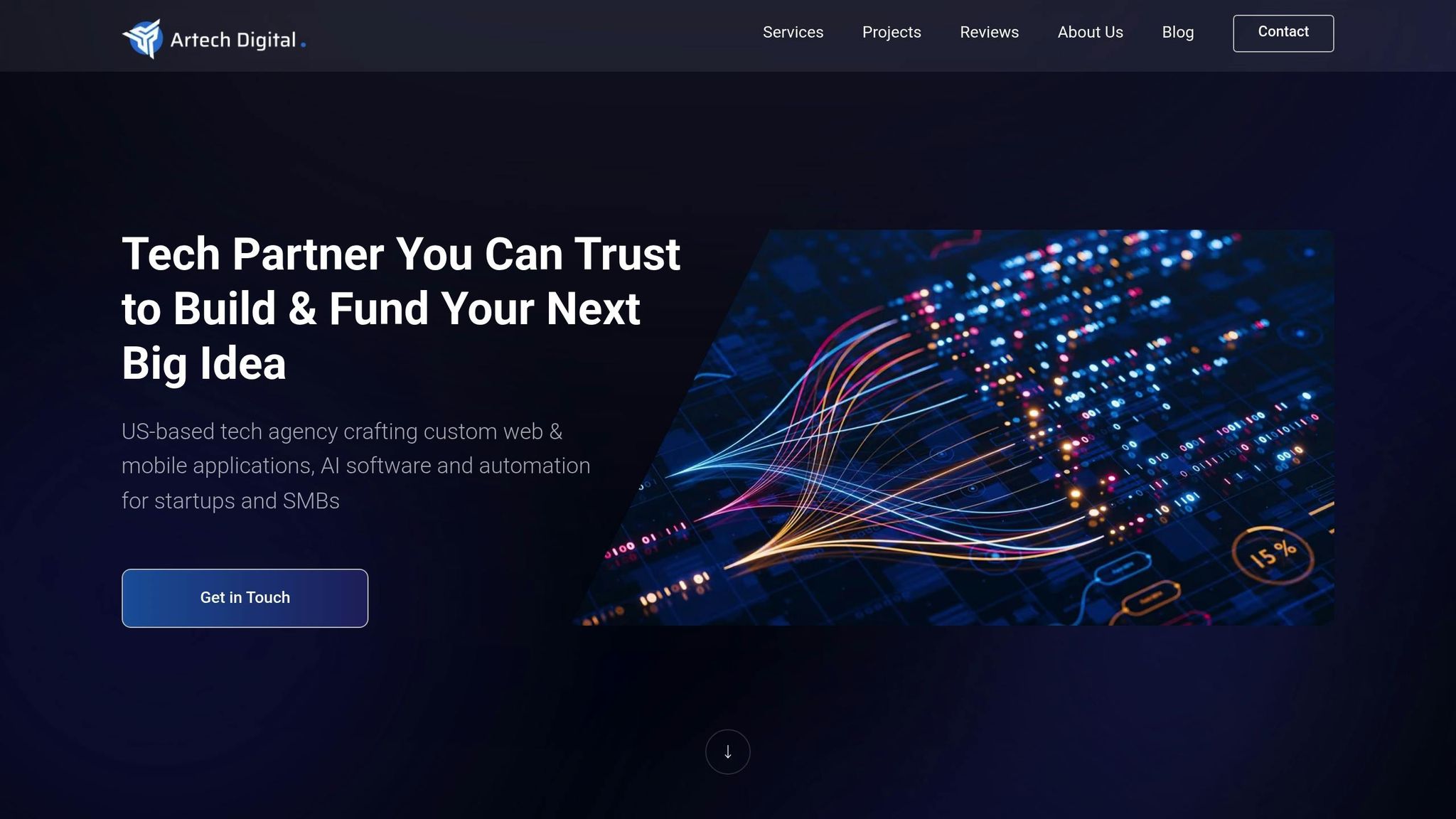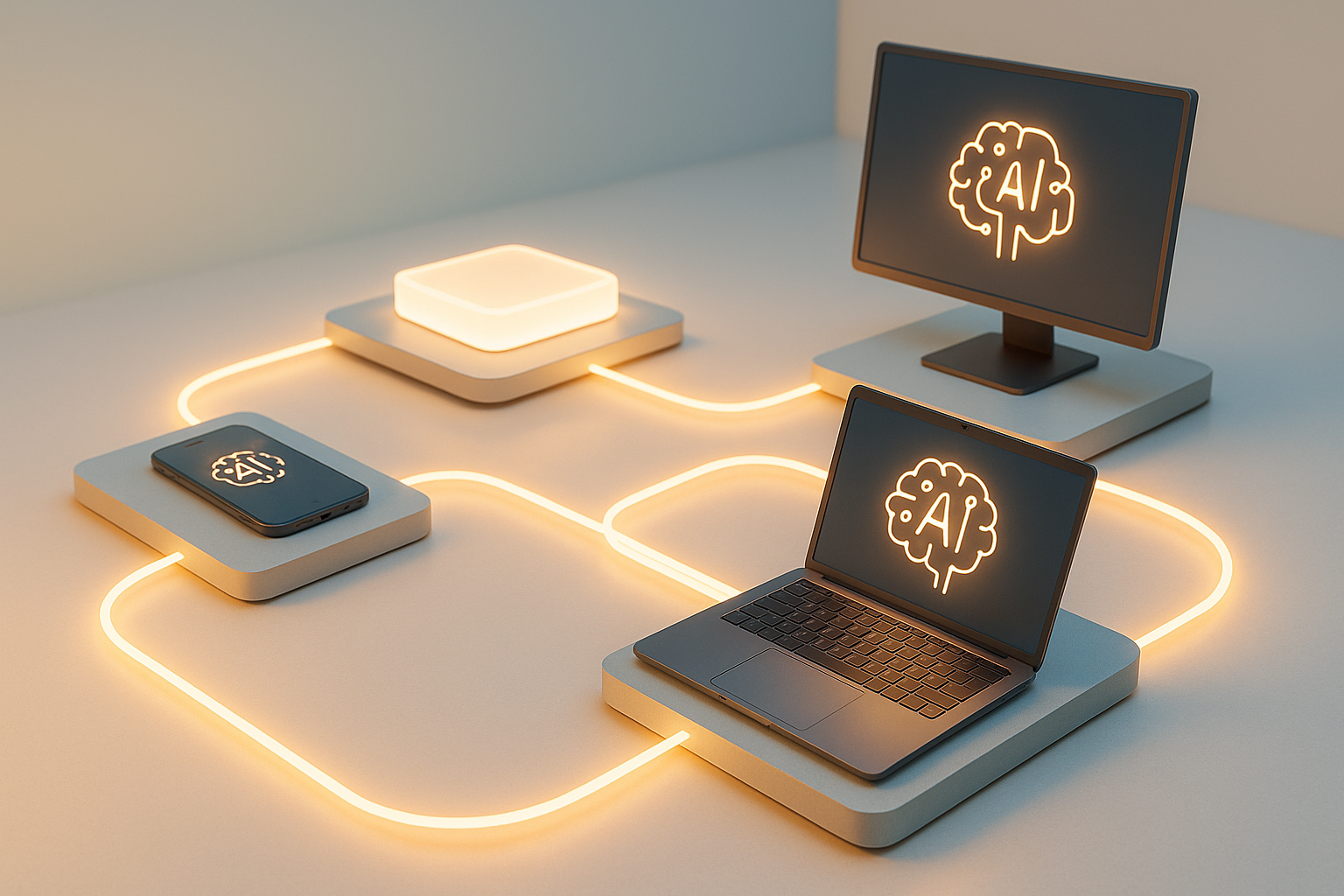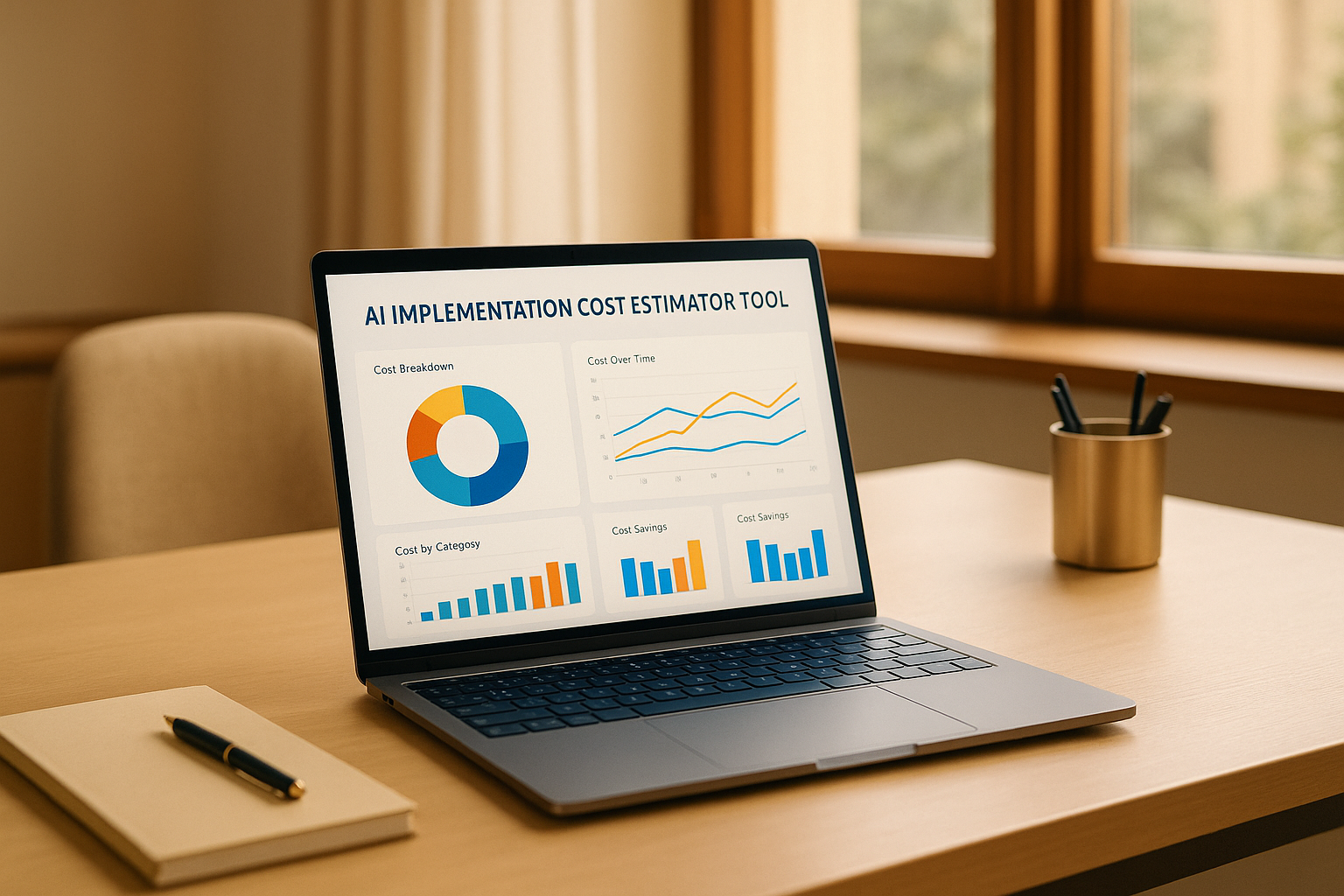
RAG (Retrieval-Augmented Generation) chatbots are transforming how businesses handle workflows by combining large language models with real-time data retrieval. Unlike traditional chatbots, RAG systems provide accurate, up-to-date responses by pulling information from internal databases, documents, and live data feeds. Here’s why they matter:
These chatbots are already making an impact across industries like healthcare, finance, retail, and more, with businesses reporting reduced costs, faster resolution times, and improved customer satisfaction. The future of automation lies in systems like RAG, which deliver precise, real-time solutions tailored to evolving business needs.
RAG chatbots are transforming how businesses operate by delivering accurate responses, real-time data access, reduced costs, and improved user confidence. They go beyond simple automation, offering tools that boost efficiency and dependability. Let’s dive into how real-time data integration makes these benefits possible.
RAG chatbots connect language models with live data sources - such as social media, news outlets, and internal databases - ensuring a steady flow of up-to-date information. This means teams can access relevant, domain-specific data without delay. As IBM explains:
"RAG systems essentially enable users to query databases with conversational language." - IBM
A great example is JetBlue’s "BlueBot", which uses Databricks and open-source generative AI models to provide controlled, team-specific data access. This setup reduces errors and strengthens operational consistency.
"RAG is a more cost-effective approach to introducing new data to the LLM. It makes generative artificial intelligence (generative AI) technology more broadly accessible and usable." - AWS
The ability to retrieve real-time information translates directly into cost and time efficiencies. RAG chatbots can handle up to 80% of routine inquiries, slashing customer support costs by 30%. In industries like banking and healthcare, each chatbot query saves about 4 minutes of an agent’s time, which equates to savings of $0.50 to $0.70 per query.
Take Vodafone’s virtual agent, TOBi, for instance. It independently resolved 70% of customer inquiries, cutting the cost-per-chat by 70%. Similarly, Klarna’s AI assistant now manages two-thirds of customer service interactions - work equivalent to 700 full-time agents. This efficiency is projected to boost profits by $40 million in 2024. Customers now resolve issues in under 2 minutes, down from an 11-minute average, with a 25% drop in repeat inquiries.
Alibaba’s AI chatbots are another standout. They handle 75% of online queries, saving the company around $150 million annually. During peak shopping periods, these chatbots manage over 2 million customer sessions daily, processing more than 10 million messages and addressing 40% of hotline inquiries.
"A McKinsey study found that using AI-based RAG chatbots with human agents can double productivity while halving costs per call."
Across industries like retail, e-commerce, banking, and healthcare, RAG solutions saved businesses $8 billion in 2022 alone. Even a modest 1% improvement in first-call resolution can save a mid-sized business $286,000 annually.
Accuracy is essential, but transparency in sourcing information is what truly builds user trust. RAG chatbots excel here by attributing their answers to specific sources. When users can see where the information comes from, they’re more likely to trust and verify it, creating confidence in the AI system.
This transparency is especially important in high-stakes environments where decisions have significant consequences. For example, source attribution allows users to trace critical information back to its origin, even when multiple data sources are involved. In enterprise journalism, this has streamlined fact-checking while maintaining accuracy and reducing editorial review times.
The impact of transparent sourcing is clear in the marketplace. One major online retailer saw a 25% increase in customer engagement after integrating RAG-based search and product recommendations. By openly sharing their use of RAG-driven tools, companies can establish ethical standards, enhance reliability, and gain a competitive edge.
Creating an effective RAG chatbot starts with a solid technical setup and thoughtful deployment. These elements are the backbone of a system that delivers precise, timely responses and integrates seamlessly into complex business workflows. The difference between a chatbot that excels and one that falls short often comes down to how well its core components and security measures are implemented.
At the heart of a successful RAG chatbot are six key components that work together to process, store, and retrieve information efficiently. A clear understanding of these elements is crucial for building a system that can handle the demands of real-world applications.
| Framework | Key Attributes | Language Support | Specialization |
|---|---|---|---|
| LangChain | Modular components, prompt management | Python, TypeScript | General LLM applications |
| EmbedChain | Document embedding, quick prototyping | Python | Rapid prototyping |
| LlamaIndex | Workflow orchestration, evaluation tools | Python, TypeScript | RAG-specific implementations |
When selecting a framework, consider your team's expertise and project needs. LangChain is a great choice for building complex applications, LlamaIndex is tailored for RAG-specific tasks, and EmbedChain is ideal for quick prototyping.
"RAG enables AI to respond with the most relevant and up-to-date data and information, because fresh, trusted data can instantly be retrieved from internal sources such as document databases or enterprise systems." – Gartner
Integration with enterprise tools like CRM or ERP systems is also essential. This allows your chatbot to access real-time data, ensuring it stays updated with dynamic data loading and version control.
These foundational elements naturally lead into the critical topics of security and performance optimization.
With the technical foundation in place, the next step is to ensure robust security and performance. These practices protect sensitive data and maintain smooth operation.
RAG systems are proving to be powerful tools for businesses, offering ways to simplify complex workflows and improve operations. By automating information processing while maintaining context, RAG chatbots are helping organizations achieve better efficiency and service quality.
One of the standout advantages of RAG chatbots is their ability to transform knowledge management, especially in departments like HR and finance. Take Bader Rutter's HR team, for example - they implemented a RAG assistant to handle employee queries about benefits, policies, and procedures. This not only eased the repetitive workload for HR staff but also provided employees with tailored, accurate responses.
The impact of RAG-powered solutions is clear: companies have reported a 45% reduction in average resolution times and an increase of 0.8 points in customer satisfaction scores compared to traditional scripted bots. Finance teams also benefit significantly. For instance, a major bank introduced an AI chatbot integrated with live transaction data, leading to a 35% drop in call volumes. These improvements highlight how RAG systems can streamline internal processes and set the stage for industry-specific applications.
RAG chatbots aren't just improving internal workflows - they're also driving innovation across industries. In healthcare, one hospital network connected RAG technology to its clinical decision support system, integrating electronic health records with medical databases. The results? A 30% reduction in misdiagnoses for complex cases, a 25% cut in the time doctors spent reviewing literature, and a 40% boost in early detection of rare diseases. HIPAA-compliant RAG chatbots also help patients with tasks like scheduling appointments and refilling prescriptions, reducing administrative burdens and raising satisfaction scores by 22%. One U.S. clinic even saw no-show rates drop by 28% and clinical documentation speed improve by the same percentage.
In financial services, Morgan Stanley has adopted RAG technology in its Wealth Management division to improve access to market insights and streamline internal knowledge sharing. Additionally, RAG systems are being used for fraud detection, risk assessment, compliance monitoring, and personalized financial advice - key areas that enhance trust and efficiency.
Retail and e-commerce companies are also reaping the benefits of RAG technology. Amazon, for example, uses AI-driven recommendation engines powered by RAG techniques through the COSMO framework to deliver contextually relevant product suggestions. Another online retailer uses RAG to provide real-time updates on product specifications, inventory, and shipping details, which has led to an 18% improvement in upsell performance.
The numbers speak for themselves: the RAG market is projected to grow from $1.96 billion in 2025 to $40.34 billion by 2035. Additionally, enterprise chatbot solutions can cut service costs by up to 30% and triple user engagement. These advancements underline how RAG technology is reshaping business automation in industries ranging from healthcare to retail.

Artech Digital, a US-based agency boasting over a decade of experience and more than 50 completed projects, specializes in workflow automation through custom AI solutions. Their expertise in implementing RAG (Retrieval-Augmented Generation) chatbots has helped clients save over 5,500 hours annually, all while maintaining an impressive 96% job success score.
Artech Digital creates advanced AI agents and chatbots tailored to meet specific industry demands. These solutions are designed to integrate seamlessly with platforms like Azure and AWS, often fine-tuning large language models (LLMs) to deliver precise, context-aware responses.
In 2024, two standout implementations showcased their expertise. Dolman Law Group and Hawaiian Beach Rentals adopted AI chatbots to handle tasks like case evaluations and booking inquiries. These chatbots not only saved each company 1,000+ support hours annually but also reduced monthly expenses by $7,000–$8,000 and $4,000–$5,000, respectively. On another front, Artech Digital developed a specialized Arabic legal AI assistant for a Qatar court, ensuring accurate, citation-rich responses tailored for professional legal workflows.
"We had an excellent AI bot integrated into our web app, which was delivered promptly and performs superbly. This agency gets a perfect score of 10 out of 10!"
– Monica, Founder – Klimt Creations
These solutions demonstrate how customized AI can streamline operations and adapt to unique business challenges.
Artech Digital doesn’t just stop at creating AI solutions; they ensure those solutions are scalable and seamlessly integrated into broader business processes. Their approach follows a structured three-phase process: Discovery & Road-Mapping, Build & Iterate, and Launch & Scale. This ensures their RAG chatbots connect effectively with multiple data sources and applications rather than functioning as isolated tools.
One example of this is McCarthy Tetrault’s implementation of an AI-powered chatbot. This system manages client interactions, schedules appointments, and provides instant, secure legal responses - all while adhering to strict industry security requirements. By continuously monitoring and refining these systems, Artech Digital helps businesses achieve long-term returns on investment. Their dedication has earned them recognition as part of the Top 1% of Upwork's Expert-Vetted talent pool, as well as Top Rated Seller & Fiverr Pro status in AI, data science, and software development.
"The quality of the work I received was absolutely extraordinary. I genuinely feel like I paid less than what their services are worth. Such incredible talent team. They posed very important questions and customized the final product to suit my preferences perfectly."
– Luka, Founder – Perimeter
Artech Digital’s pricing is designed to be accessible. AI integration services start at just $100, while custom AI agent development projects range from $1,000 to $20,000, depending on complexity. With over 120 five-star reviews and a perfect 5.0 rating on Fiverr, their advanced RAG solutions consistently deliver measurable results for businesses.
Workflow automation is heading into a new era, and at the heart of this evolution are RAG (Retrieval-Augmented Generation) chatbots. By blending large language models with real-time data, these chatbots are poised to become essential tools for businesses.
Looking ahead, emerging agentic and multi-agent RAG systems will allow chatbots to do much more than just answer questions. These systems will handle tasks like processing orders, managing inventory, and sending shipping notifications - all in real time. This marks a major shift from reactive automation to proactive systems where AI agents collaborate to complete specific tasks using accurate, up-to-date information.
Developments like integrating knowledge graphs (GraphRAG) with vector search and taxonomies are improving the precision and context of data retrieval. At the same time, advancements in on-device processing are boosting both privacy and speed. Open-source large language models (LLMs) are also giving businesses the ability to create highly tailored solutions that meet their unique needs.
Sundar Pichai predicts that by 2024, AI will drive 60% of interactions on personal devices. This kind of accuracy, paired with features like source attribution and transparency, not only builds user trust but also minimizes risks like AI hallucinations - critical in high-stakes fields like healthcare and finance.
RAG systems are already achieving impressive accuracy rates of 95-99% for recent queries while offering a cost-efficient alternative to retraining large models . These systems address key challenges for enterprises, such as ensuring data accuracy, meeting regulatory requirements, and controlling operational costs, all while remaining flexible enough to adapt to shifting business needs.
With over 80% of customer interactions now involving some form of automation, businesses that hesitate to adopt RAG solutions risk falling behind. To stay competitive, companies should focus on preparing their data thoroughly, implementing strong security protocols, and working with experienced AI specialists to ensure smooth deployment and maximize their return on investment.
These advancements are paving the way for businesses to combine conversational simplicity with precise data handling, creating tools that elevate customer experiences and streamline operations in an increasingly automated world.
RAG (Retrieval-Augmented Generation) chatbots bring a unique edge by tapping into external knowledge bases to pull in real-time, relevant information. This method allows them to deliver responses that are not only more precise but also better aligned with the specific context of user queries.
On the other hand, traditional chatbots stick to predefined scripts or rely on limited internal data, often producing generic or less accurate answers. By blending advanced retrieval methods with AI-driven response generation, RAG chatbots elevate workflow automation and support more informed decision-making.
A Retrieval-Augmented Generation (RAG) chatbot system depends on three core components working in harmony:
When these elements come together, RAG chatbots deliver precise, context-aware answers, streamlining workflows and reducing the need for manual effort.
To keep RAG chatbot systems safe and compliant, businesses need to focus on data encryption and enforce strict privacy protocols. Regular updates to security measures, paired with clear communication about the use of RAG technology, can help build trust and align with data protection laws.
On top of that, using real-time sensitive data redaction and creating detailed security plans can add extra layers of protection for user data without compromising system performance. Regular audits and compliance checks are essential for staying ahead of potential risks and ensuring smooth, secure operations.


